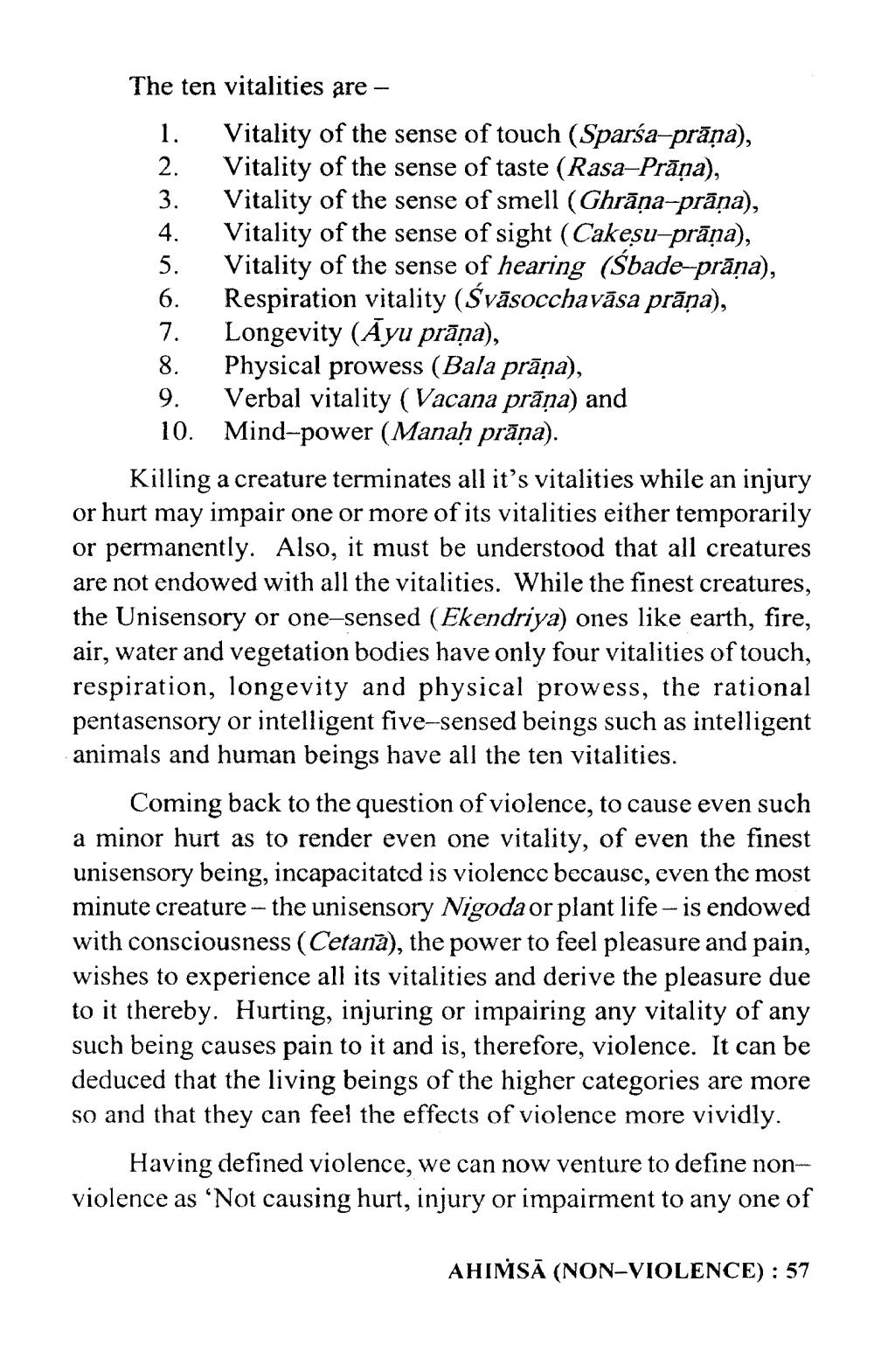________________
The ten vitalities are -
1. Vitality of the sense of touch (Sparśa-prāna), 2. Vitality of the sense of taste (Rasa-Prāņa), 3. Vitality of the sense of smell (Ghrāņa-prāna),
Vitality of the sense of sight (Cakeșu-prāna), Vitality of the sense of hearing (sbade-prāņa),
Respiration vitality (Švāsocchavāsa prāņa), 7. Longevity (Āyu prāņa), 8. Physical prowess (Bala prāņa), 9. Verbal vitality (Vacana prāna) and
10. Mind-power (Manaḥ prāņa).
Killing a creature terminates all it's vitalities while an injury or hurt may impair one or more of its vitalities either temporarily or permanently. Also, it must be understood that all creatures are not endowed with all the vitalities. While the finest creatures, the Unisensory or one-sensed (Ekendriya) ones like earth, fire, air, water and vegetation bodies have only four vitalities of touch, respiration, longevity and physical prowess, the rational pentasensory or intelligent five-sensed beings such as intelligent animals and human beings have all the ten vitalities.
Coming back to the question of violence, to cause even such a minor hurt as to render even one vitality, of even the finest unisensory being, incapacitated is violence because, even the most minute creature - the unisensory Nigoda or plant life- is endowed with consciousness (Cetanā), the power to feel pleasure and pain, wishes to experience all its vitalities and derive the pleasure due to it thereby. Hurting, injuring or impairing any vitality of any such being causes pain to it and is, therefore, violence. It can be deduced that the living beings of the higher categories are more so and that they can feel the effects of violence more vividly.
Having defined violence, we can now venture to define nonviolence as 'Not causing hurt, injury or impairment to any one of
AHIMSĀ (NON-VIOLENCE): 57




